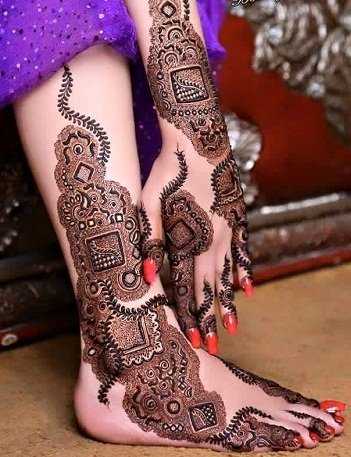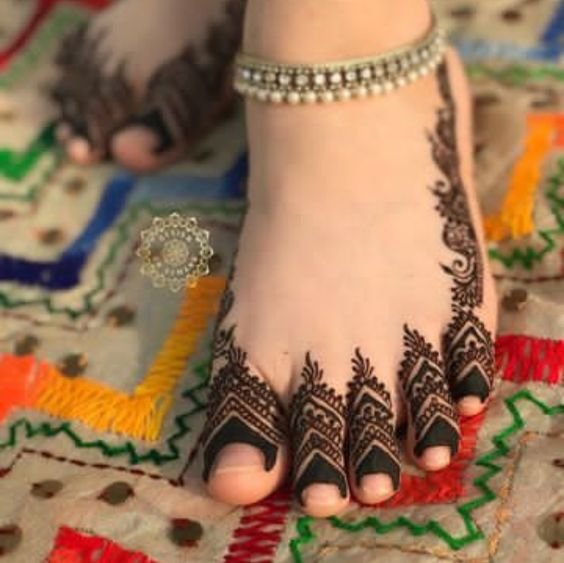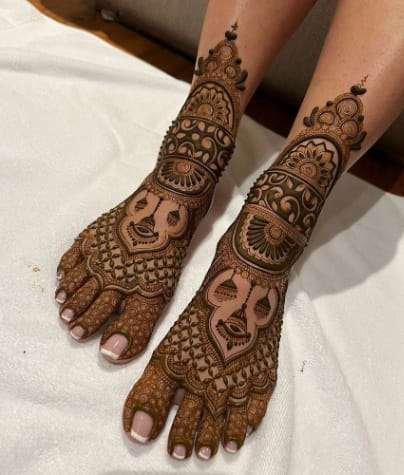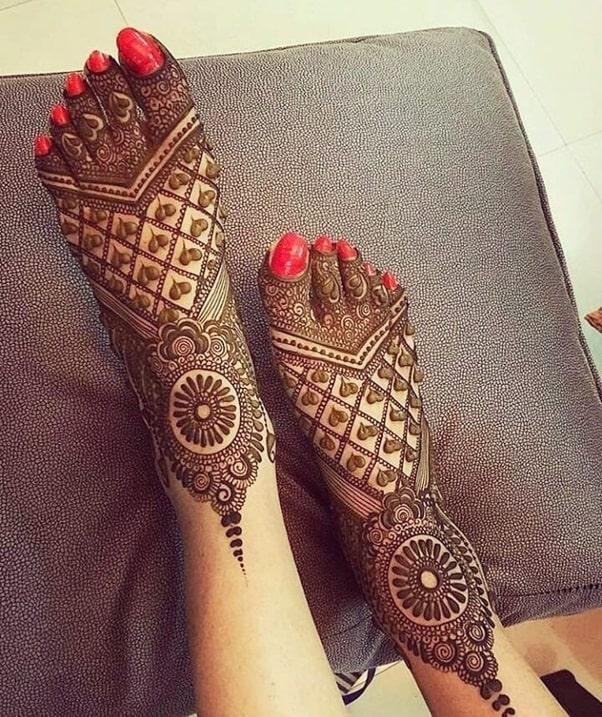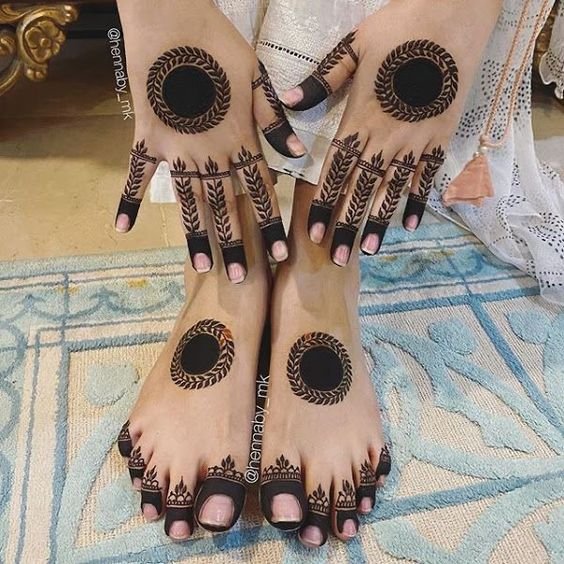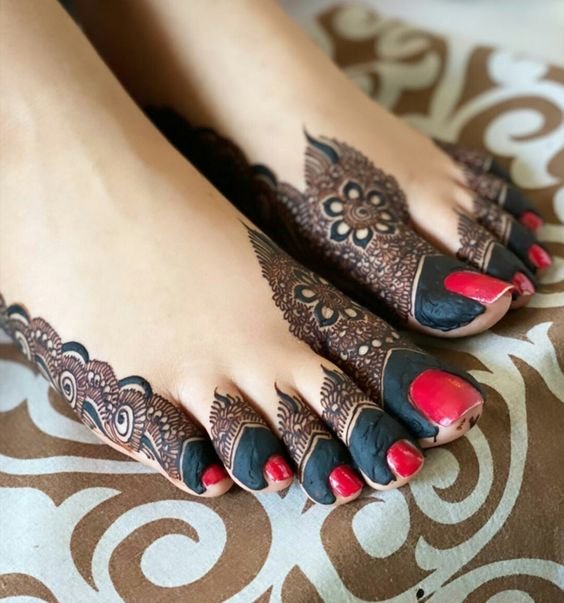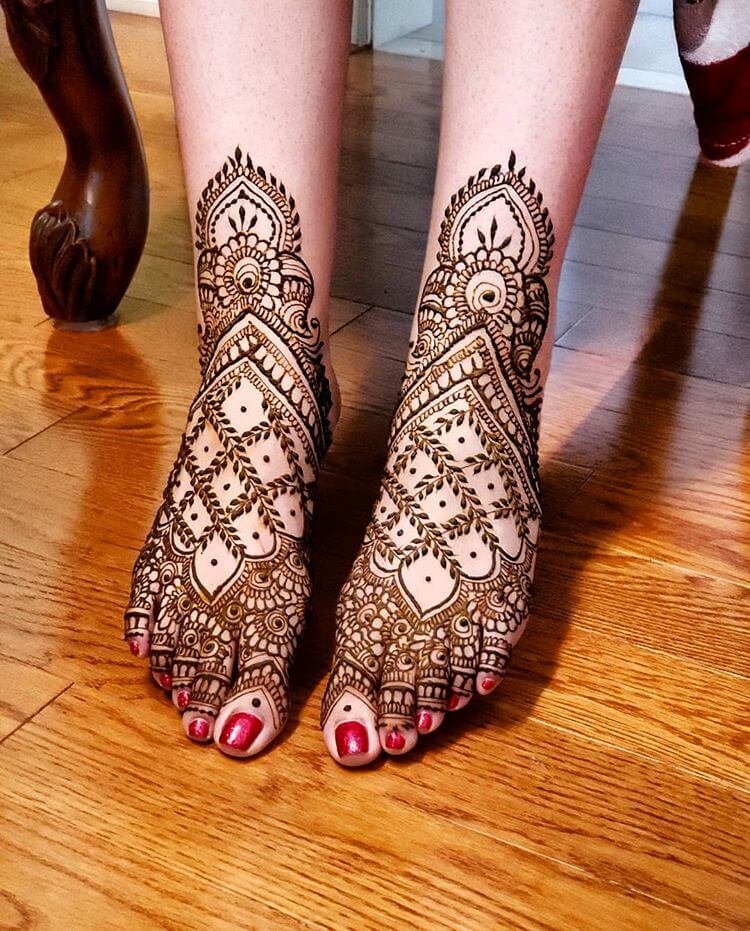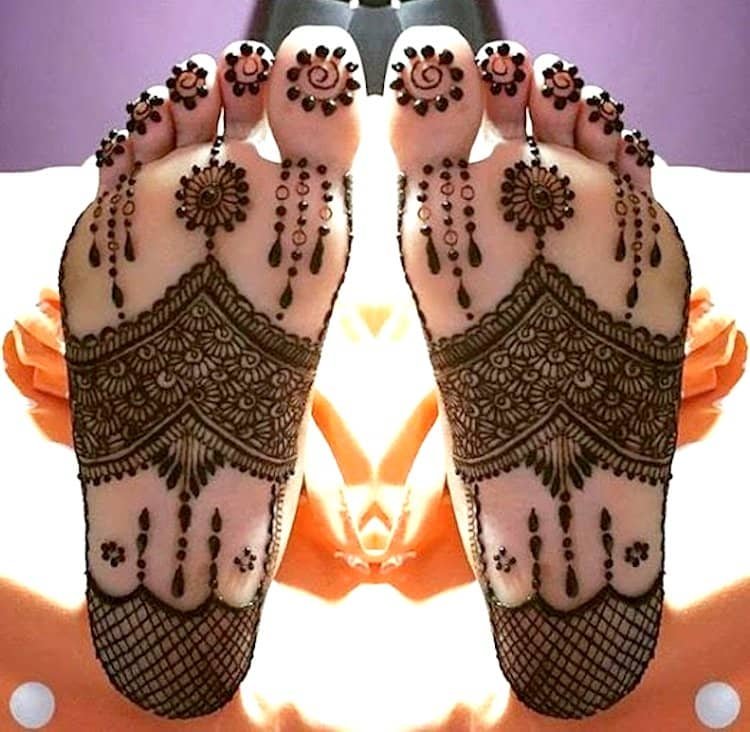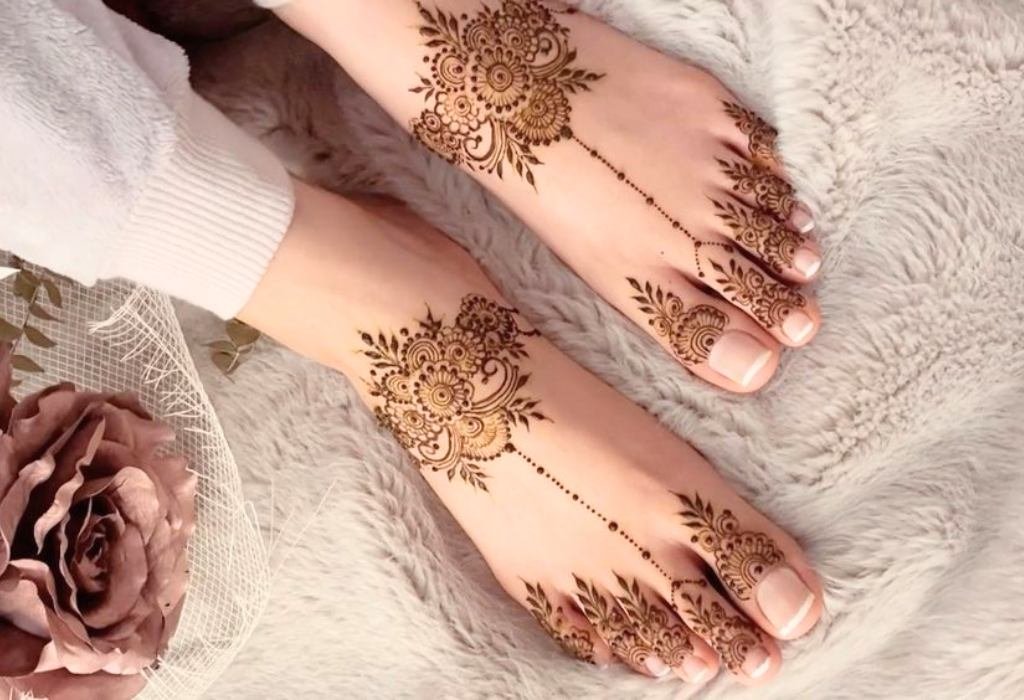Foot Mehndi Design
This article showcases amazing Foot mehndi designs that will make you feel attractive and confident. We’ve selected a variety of styles, from complex to simple styles, to ensure there’s something for everyone. Whether you prefer traditional style or contemporary mehndi art, our collection has it all.
Henna, also known as henna, is a traditional form of body art that has been cultivated and practiced for centuries in various cultures, especially in South Asia, the Middle East, and North Africa. This ancient art involves applying intricate leather designs using a paste made from powdered leaves of the henna plant (Lawsonia inermis). The resulting scars are dark red to brown in color, depending on the quality of the seal and the length of time it has been on the skin.
Mehndi is much more than a cosmetic application; It is deeply rooted in cultural and religious traditions. It is used to celebrate special occasions, symbolize rites of passage and convey blessings and good luck. The art of Mehndi has evolved over time, combining a variety of styles and designs, but still remains a symbol of beauty, celebration and cultural identity.
Applied at weddings, festivals or other important events, henna continues to attract attention with its intricate designs and cultural heritage. This timeless tradition connects past and present, connecting people with its artistic expression and enduring appeal.
The Art and Tradition of Mehndi
Mehndi, also known as henna, is a form of body art that has been celebrated for centuries in various cultures, especially in South Asia, the Middle East, and North Africa. This ancient practice involves applying intricate designs to the skin using a paste made from powdered leaves of the henna plant. The resulting scars, which range from dark red to brown, are not only beautiful, but also culturally rich.
Creating mehndi designs is both an art and a ritual. The process begins with preparing the henna mixture, which is obtained by mixing powdered henna leaves with water, lemon juice, and essential oils. Leave this mixture to rest for several hours to release the dye. Once the paste is prepared, it is applied to the skin using a small cone or stick, allowing fine, detailed patterns to be made.Foot mehndi design.
Creating mehndi designs is both an art and a ritual. The process begins with the preparation of the henna mixture, which is obtained by mixing henna leaf powder with water, lemon juice and essential oils. Let this mixture sit for a few hours to release the dye. After the paste is prepared, it is applied to the skin using a cone or small stick, allowing fine and detailed designs to be made.
Top Articles
Historical Roots Of Mehndi
Henna, also known as mehndi, dates back more than 5,000 years and is believed to have originated in ancient Egypt, where it was used to embalm and decorate the bodies of the dead. Over time, this complex art form has spread to different regions, adapting and evolving to suit the cultural contexts of different cultures. In India, henna has become an integral part of Hindu ceremonies and rituals, often associated with weddings and festivals. The mehndi ceremony is a pre-wedding event, filled with music and dance, as brides decorate their hands and feet with elaborate henna designs that symbolize love and prosperity.Foo design.t mehndi
In the Middle East, henna has been adapted into Islamic traditions and is widely used in celebrations such as Eid al-Fitr and Eid al-Adha. Women and girls add to the festive spirit by applying beautiful mehndi designs on their hands and feet. Mehndi’s journey through history emphasizes its diversity and cultural significance, as it has become a cherished tradition in many cultures, crossing borders. Today, mehndi is attracting the attention of people all over the world as a beautiful expression of cultural heritage and artistic creativity, combining traditional styles with modern trends.
Cultural Significance
In South Asian cultures, especially India and Pakistan, henna has great cultural and traditional value. It is an integral part of the wedding ceremony where the hands and feet of the bride are decorated with elaborate designs. Mehndi ceremony is a joyous pre-wedding ceremony filled with music, dance and celebration. The intricate designs are believed to symbolize love, prosperity and luck. There is a common belief that the deeper the henna stain, the deeper the love between the bride and groom.
In Middle Eastern and North African cultures, henna plays an important role during Eid celebrations, especially Eid al-Fitr, which marks the end of Ramadan, the holy month of fasting. This joyous occasion is one of the most important Islamic holidays, and marks the end of an era of spiritual contemplation and the beginning of an era of celebration and communal rejoicing.
- A Celebration of Eid: Eid al-Fitr, often referred to as “the Feast of the Breaking of the Day,” is a day of great joy and thanksgiving for Muslims around the world. It begins with a special prayer called the Eid prayer, performed with the congregation in mosques or open areas. This prayer is followed by the sermon and the shared meal, which is an important aspect of the celebration. Family and friends share food, exchange gifts, and wish “Eid Mubarak,” which means “Happy Eid al-Adha.”
- Tradition of Beauty and Joy: A distinctive feature of holiday celebrations in Middle Eastern and North African cultures is the application of henna. In this ancient tradition, women and girls decorate their hands and feet with beautiful and intricate mehndi designs. Mehndi application is usually applied the night before Eid, known as ‘Chand Raat’ or ‘Night of the Moon’, when the new moon appears, marking the end of Ramadan.
- The Mehndi Application Process: Mehndi application is a popular and joyful activity during Eid. Women and girls gather in groups, whether at home or in beauty salons, to apply henna. The air is full of excitement as the mehndi artist creates intricate designs ranging from floral and paisley motifs to geometric shapes and abstract patterns. Henna paste, made from powdered henna leaves mixed with water, lemon juice and essential oil, is applied using a small cone or stick.
- Once applied, the henna mixture is allowed to dry for a few hours to allow the dye to penetrate the skin. Some of the traditional methods to increase the color and permanence of the stains include covering the henna with a mixture of lemon juice and sugar or wrapping the hands and feet with a cloth. Once the paste is removed, a beautiful, reddish-brown scar appears, which can last from one to three weeks.
- A Modern Twist On Tradition: While traditional mehndi designs are popular, modern trends have brought new styles and techniques into the mix. Known for its bold and flowing designs, Arabic henna has gained popularity for its simplicity and beauty. Minimalist designs that focus on smaller, more delicate designs have also become a favorite of younger generations.
In recent years, social media has played an important role in spreading mehndi trends and techniques. Platforms like Instagram and Pinterest are full of images and tutorials, allowing people to share their designs and get inspiration from all over the world. It is the result of a blend of traditional and contemporary styles, making mehndi a modern art form that continues to fascinate and inspire.
For More Fun Things Visit babulnoor.com
End Note
Mehndi is more than body art. It is a celebration of cultural heritage, artistic expression and social enjoyment. Its intricate design and rich history continue to fascinate and inspire people around the world. Whether used to celebrate a special occasion or simply as a personal adornment, henna is a time-honored tradition that connects generations and connects the past and present thanks to its enduring beauty and cultural significance.

